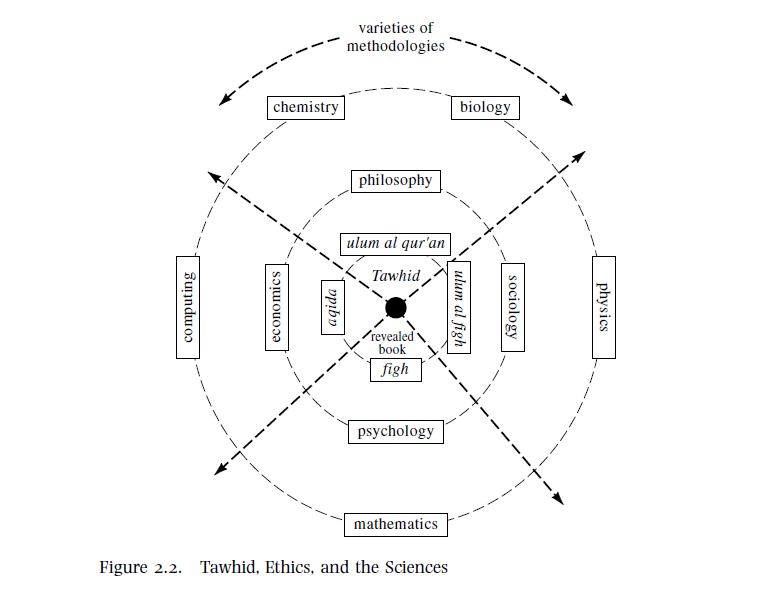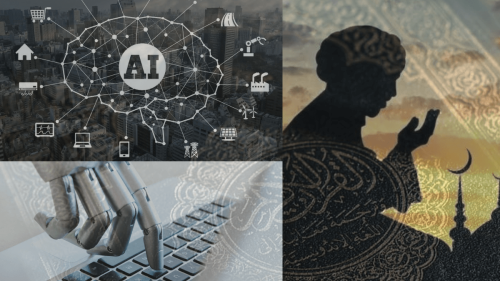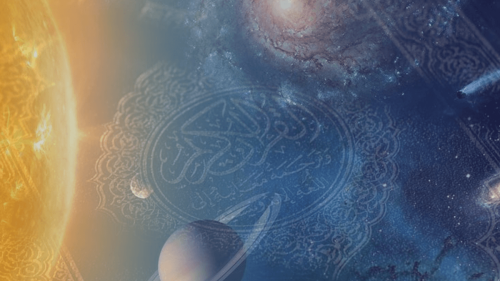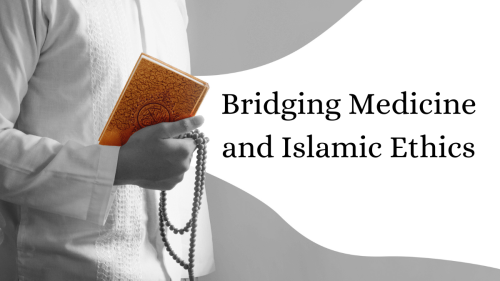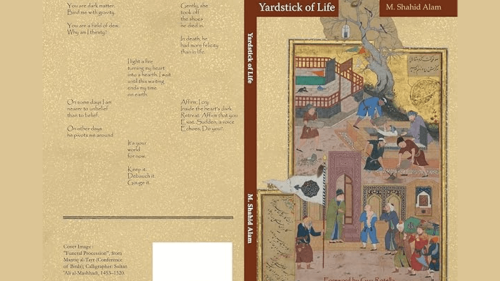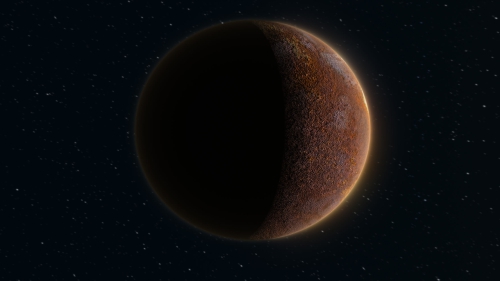Faith, Science and Ethics

The whole of the analysis we have proposed in the preceding sections will help us to deal with a question that is basic for the contemporary Muslim intellect. We often recall the extraordinary contribution Muslims have made historically to scientific development and progress and emphasize the fact that they—more than any other civilization—have advanced the sciences to a higher level. If these facts prove that the current backwardness and difficulties in the area of science in Muslim countries are not intrinsic to Islam, it is nonetheless true that although they may comfort our hearts, they do not provide solutions to contemporary problems. In industrialized and technologically advanced countries, Muslims seem to suffer from a malaise, wedged between their particular ethics and science, which sometimes seems to contradict, or more often to jostle, their faith and convictions. What sort of relationship can be maintained among faith, the scriptural sources, ethics, and the human or hard sciences? Most Muslims ask themselves this question without always providing a clear answer. Are there aspects of the study of the sciences, or at least some of them, that have become “non-Islamic” under the pressure of modernity? How can we speak of the “comprehensive character” and the universality of Islam and at the same time feel ill at ease in the world of knowledge and progress? What is the source of the problem, and how can this apparent contradiction be resolved?
We have seen how necessary and crucial was the work of categorization undertaken by scholars in their reading of the sources. When they were carrying out this work, the sources themselves, as much as the demands of their studies and the vicissitudes of history, at the same time forced them to differentiate between the specific areas of religious study: thus were born the sciences of the Qur’an (ulum al-Qur’an), the sciences of Prophetic tradition (ulum al-hadith), the science of creed (ilm al-aqida), the science of the fundamentals of law and jurisprudence (ilm usul al-fiqh), and others.
Between approximately the tenth and eleventh centuries, the corpus of these sciences was formed according to a design represented in figure 2.1. This was a stimulating typology appropriate for the clarification of the limits and objectives of each area. Moreover, it naturally lent itself to encouraging research in all the other sciences for at least three reasons: first, because the Qur’an and the traditions invited the human spirit to study and understand the world; second, because the religious sciences themselves very often referred to scientific discoveries (in medicine or astronomy, for example) to work out an aspect of practice; and third, because the framework of reference was so nourished by religion that the connection between ethics and science was immediate and natural and necessarily less at risk at that time because few situations were recognized as delimited.
When the Renaissance, humanism, and the Reformation—all deeply influenced and enriched by Islamic civilization—worked together in the West, although differently, to start the process of secularization and to set free the power of reason that has become more and more autonomous and scientific, Islamic civilization seemed to freeze. The natural and once coherent interaction between the “Islamic sciences” and other areas of knowledge—and some ulama had mastery of both—now seems defunct. The naturally ethical approach to the sciences that had characterized the Muslim stance till now seemed to suffer as, in the West, the successes of science took shape—a science that was becoming more and more distant from moral norms and also seemed to draw its power from a liberation from religious authority. Gripped by the ethical teaching of Islam, increasingly incapable of renewing the dynamic link between the moral frame of reference and the autonomy of reason, and feeling that they are in danger vis-a`-vis the dynamism and expansion of Europe, the ulama were bound to the supreme authority of the religious sciences and preferred to sacrifice “the other knowledge,” rather than the norms of religion. For more than six centuries, no Muslim scholar has spoken out against science; rather, they all much prefer to recall the glorious past of Islam regarding the subject and the constant invitation of the religious sources to move science forward. Behind this sustained nostalgia and idealized dream, a deep malaise lies hidden, because we do not know, we no longer know, how to reestablish the connection between religion and science such that religion’s ethical teachings give science a dignified finality without perverting its implementation or impeding its advances.
The overall sense is that the categorization of the Islamic sciences that was so useful in the context of the Middle Ages has become a stumbling block because it still retains a dualistic—and essentially very “Greek”— perception of the hierarchy of knowledge. For the Muslim spirit, the problem remains the same: the “all-comprehensive character of the message” comes face to face with a diametrically opposed reality whose terms of reference are apparently irreconcilable with its own. One of the solutions seems to be a wholehearted rush into activity consisting of showing how the Qur’an contains scientific truths; but this collecting of scientific discoveries in the text, this “harmonization,” which too easily turns Revelation into a scientific textbook, ill conceals an inability to engage with the scientific world while treating the Texts with integrity. Another response, interesting in itself, has been suggested by the eminent Muslim intellectual Ismail al-Faruqi, who lived in the United States until his death and who was one of the founders of the International Institute of Islamic Thought (IIIT). He suggested the idea of an “Islamization of knowledge” and proposed discussion of the paradigms that underlay the various so-called profane sciences. This development has now revealed its limitations and has not met the hopes of its proponents. The question facing the Muslim mind remains: how can the connection be reestablished?
Once again it is a return to the scriptural sources that will make it possible for us to sketch the outlines of a solution. What they have taught us may be presented as two major theses:
- The unity of the Source (God as revealed in the Texts), which is whereethics finds its coherent foundation, never implies a similarity of approaches or a uniformity of methodologies.
- Varieties of methodologies are constructed rationally, taking as thestarting point the object of study, not the relation to the Transcendent or to a system of knowledge that He has preordained.
Work on the scriptural texts, taken as an object of study in itself, demonstrated a diversity of methodologies and gave rise to a multitude of “Islamic sciences,” each having its methodology, its field of investigation, and its limitations. Exactly the same logic should guide us in all areas of knowledge.
Faith connects the believer with the Creator in all areas of life, and life should stay committed as much as possible to the centrality of tawhid. Intellect, committed to tawhid and the scriptural sources, will produce, as we have seen, a system of ethics built upon the meaning and the finality of life, which lie at the heart of the universal message of Islam. That same intellect will also, nevertheless, work out, completely autonomously and on the basis of its object of study, appropriate rules and methods that will set the boundaries for the science in question. In other words, and completely consistently, reason connected with the Source (God and the Texts) formulates ethical teaching on the one hand and on the other sees itself as obliged by its object of study to set completely autonomous scientific rules and methods. There is no need to Islamize the sciences or to combine and confuse ethics and scientific methods: the universality of Islam offers a coherence that implies no confusion. So we must propose a new representation of the scientific universe if we want to avoid the dualistic impasse into which we were carried by the representation referred to earlier and produced by the medieval Muslim mind. We might present the picture as shown in figure 2.2.
In figure 2.2, from the centrality of tawhid, the arrows pointing from the center represent ethical teaching drawn from the scriptural sources. Along the concentric circles are the various sciences, each of which has its own methodology established by the autonomous efforts of reason on the basis of the object of study (e.g., the Texts for the religious sciences, the human body for medicine, social dynamics for sociology). The various circles represent the various degrees of proximity (without any kind of hierarchy) that the different sciences may have with the scriptural sources. Thus, the sciences traditionally called “Islamic” are naturally in the first circle; the humanities, where the scope for interpretation, subjectivity, and ideological orientation is considerable, are in the second circle (a particular view of the world may influence work on these sciences): the hard or pure sciences are in the last circle because their methodologies are virtually autonomous and are connected to the structure imposed by the object of study. The universal and comprehensive message of Islamic ethics penetrates all the sciences without exception, calling for moral consistency, but it does not confuse the latter with the autonomy of scientific methods (in themselves morally neutral).
Thus, human reason finds itself between two books, each of which, as an object of study, determines and imposes specific methodologies. From the revealed Book we must extrapolate and organize a grammar, a typology of rules, or the content of the credo. From the book of nature, we must discover the laws, functions, and logical patterns of organization, which give birth to medicine, chemistry, and physics. Ethics is the light that allows a “faithful” reading of the two books: it requires understanding of the laws, as well as respect for their balance.
This new representation makes it possible for us to change the old paradigms and rediscover ways that make a union possible. With reference to the elements that constitute the human being, we have shown that none of them is positive or negative “in itself” and that a moral quality can be acquired only through exactingness, discipline, self-control, and humility. It is exactly the same in the sciences, and it is the union of controlled scientific method and applied ethics that makes people faithful to the source at the heart of the various fields of knowledge. So, like all the elements that make up the human being, all the scientific methods (imposed by creation itself, the open book) are “Islamic” by nature; mastered by mankind in the name of the ultimate values of life, they must, ethically, become so by conscience.
In order to achieve this, the consciousness of the believer will have to respond, in the very midst of scientific research and its application, to the three fundamental moral questions of the Islamic universe of reference:
- What are my intentions (al-niyya) in engaging in the study of this science? There must be an active connection with tawhid.
- What ethical boundaries must I respect? The concrete application ofthe ethical teaching must be rationally connected with the scriptural sources.
- What are the ultimate objectives of my research? Scientific activitymust be integrated into the “way of faithfulness,” the “path to the Source.”
At the end of this analysis we have come to understand that the principle of shumuliyya, the comprehensive character of the Islamic message, constitutes anything but a confusion of categories or, at the other extreme, a split between them such that one might legitimately be anxious about the emergence of a “science without conscience,” to use Rabelais’s phrase. The same logic we have already encountered, when considering relations with the Texts, the human being, or the principle of integration, is at work here. Drawing on tawhid, faith demands of reason that it should unite, marry, pacify in full faithfulness: as a testimony to consciousness of the covenant. It is also an expression of how demanding is this concept of “universality”: in practice, it means that Muslims must engage, within their own areas of competence, in groundbreaking specialization in all the areas of contemporary knowledge and that, far from becoming intoxicated by that knowledge and changing it into a new idol of modern times, they must make their contribution to the ethical questions that it raises. The scientific challenges facing the new Muslim presence that seeks to act from within, not from the margins of society and science, are to master the rules and methods of the various humanities and pure sciences, to discuss hypotheses and applications, and to put forward new perspectives. The greatest challenge is to preserve the centrality of what is essential—the connection with the Source, a sense of responsibility, and retention of an awareness of “the need of Him,” which gives birth to humility—even, and especially, in scientific activity.
( Reprinted from TariqRamadan.com )
Topics: Adab (Islamic Ethics), Islam And Science, Islamic Culture And Civilization
Views: 2970
Related Suggestions







